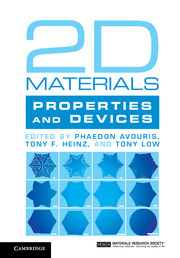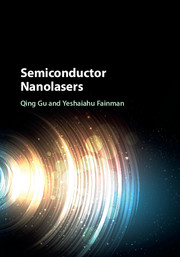Refine listing
Actions for selected content:
881 results in Ebooks in nanotechnology
3 - Optical Properties of Graphene
- from Part I
-
-
- Book:
- 2D Materials
- Published online:
- 22 June 2017
- Print publication:
- 29 June 2017, pp 38-51
-
- Chapter
- Export citation
16 - Electrical Transport in MoS2: A Prototypical Semiconducting TMDC
- from Part II
-
-
- Book:
- 2D Materials
- Published online:
- 22 June 2017
- Print publication:
- 29 June 2017, pp 295-309
-
- Chapter
- Export citation
2 - Electrical Transport in Graphene: Carrier Scattering by Impurities and Phonons
- from Part I
-
-
- Book:
- 2D Materials
- Published online:
- 22 June 2017
- Print publication:
- 29 June 2017, pp 25-37
-
- Chapter
- Export citation
Contributors
-
- Book:
- 2D Materials
- Published online:
- 22 June 2017
- Print publication:
- 29 June 2017, pp xi-xvi
-
- Chapter
- Export citation
22 - Anisotropic Properties of Black Phosphorus
- from Part III
-
-
- Book:
- 2D Materials
- Published online:
- 22 June 2017
- Print publication:
- 29 June 2017, pp 413-434
-
- Chapter
- Export citation
1 - Graphene: Basic Properties
- from Part I
-
-
- Book:
- 2D Materials
- Published online:
- 22 June 2017
- Print publication:
- 29 June 2017, pp 7-24
-
- Chapter
- Export citation
Part II
-
- Book:
- 2D Materials
- Published online:
- 22 June 2017
- Print publication:
- 29 June 2017, pp 257-378
-
- Chapter
- Export citation
10 - Graphene: Optoelectronic Devices
- from Part I
-
-
- Book:
- 2D Materials
- Published online:
- 22 June 2017
- Print publication:
- 29 June 2017, pp 180-196
-
- Chapter
- Export citation
18 - TMDs – Optoelectronic Devices
- from Part II
-
-
- Book:
- 2D Materials
- Published online:
- 22 June 2017
- Print publication:
- 29 June 2017, pp 329-343
-
- Chapter
- Export citation
4 - Graphene Mechanical Properties
- from Part I
-
-
- Book:
- 2D Materials
- Published online:
- 22 June 2017
- Print publication:
- 29 June 2017, pp 52-70
-
- Chapter
- Export citation
Introduction
-
-
- Book:
- 2D Materials
- Published online:
- 22 June 2017
- Print publication:
- 29 June 2017, pp 1-4
-
- Chapter
- Export citation
8 - Electron Optics with Graphene p–n Junctions
- from Part I
-
-
- Book:
- 2D Materials
- Published online:
- 22 June 2017
- Print publication:
- 29 June 2017, pp 141-158
-
- Chapter
- Export citation
6 - Thermal Properties of Graphene: From Physics to Applications
- from Part I
-
-
- Book:
- 2D Materials
- Published online:
- 22 June 2017
- Print publication:
- 29 June 2017, pp 90-103
-
- Chapter
- Export citation
25 - Predictions of Single-Layer Honeycomb Structures from First Principles
- from Part III
-
-
- Book:
- 2D Materials
- Published online:
- 22 June 2017
- Print publication:
- 29 June 2017, pp 472-484
-
- Chapter
- Export citation

2D Materials
- Properties and Devices
-
- Published online:
- 22 June 2017
- Print publication:
- 29 June 2017

Semiconductor Nanolasers
-
- Published online:
- 25 March 2017
- Print publication:
- 16 February 2017
3 - Purcell Effect and the Evaluation of Purcell and Spontaneous Emission Factors
-
- Book:
- Semiconductor Nanolasers
- Published online:
- 25 March 2017
- Print publication:
- 16 February 2017, pp 65-90
-
- Chapter
- Export citation
Appendix A - Spontaneous Emission in Free Space and Cavity
-
- Book:
- Semiconductor Nanolasers
- Published online:
- 25 March 2017
- Print publication:
- 16 February 2017, pp 270-274
-
- Chapter
- Export citation
8 - Multi-physics Design for Nanolasers
-
- Book:
- Semiconductor Nanolasers
- Published online:
- 25 March 2017
- Print publication:
- 16 February 2017, pp 168-201
-
- Chapter
- Export citation
Index
-
- Book:
- Semiconductor Nanolasers
- Published online:
- 25 March 2017
- Print publication:
- 16 February 2017, pp 321-324
-
- Chapter
- Export citation
